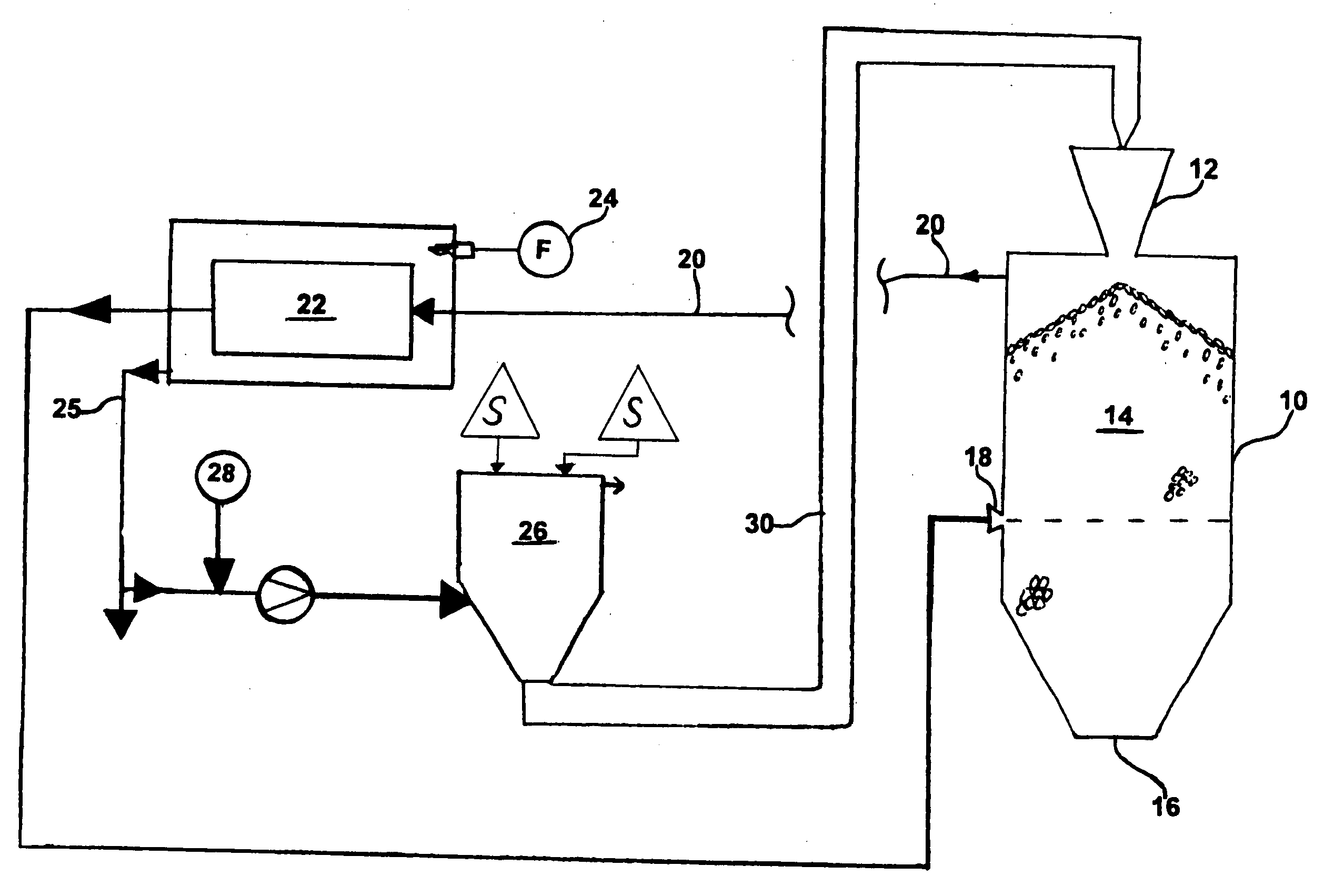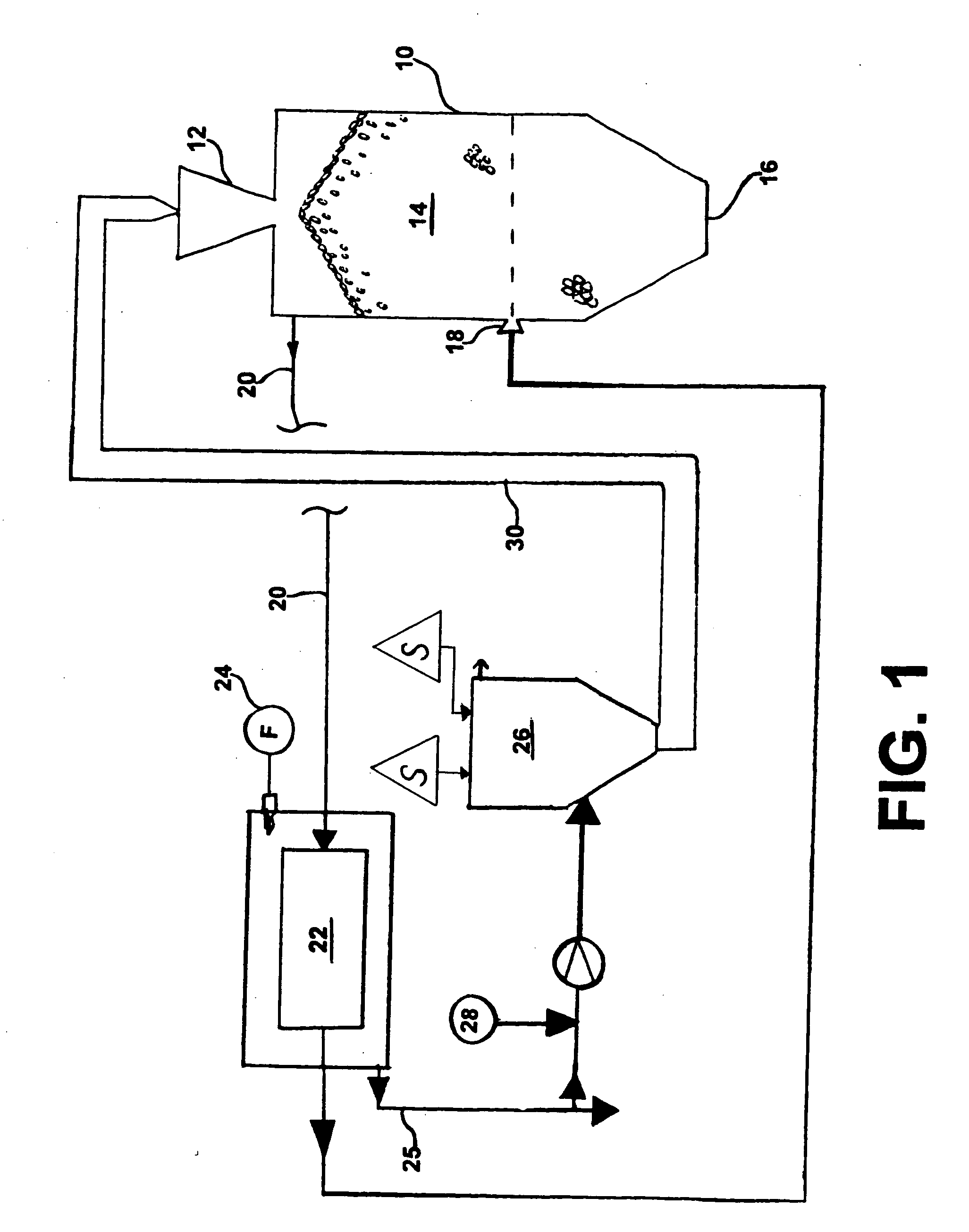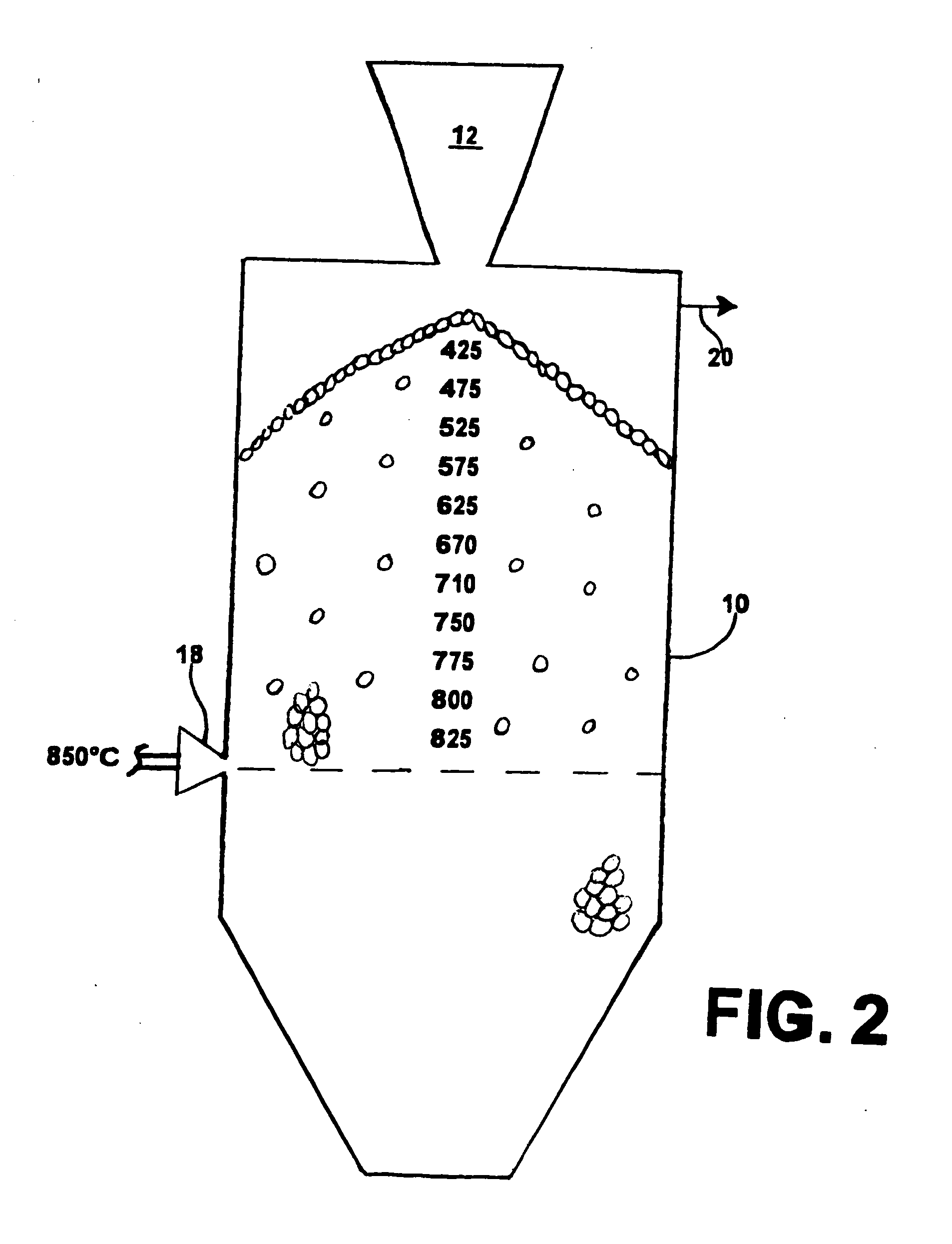Combined pre-treatment process for enabling feed material to be charged in direct reduction processes
a pre-treatment process and direct reduction technology, applied in climate sustainability, furnace types, furnace types, etc., can solve problems such as internal stress release, and achieve the effects of reducing the generation of fines
- Summary
- Abstract
- Description
- Claims
- Application Information
AI Technical Summary
Benefits of technology
Problems solved by technology
Method used
Image
Examples
Embodiment Construction
[0018] As shown in FIG. 1, a direct reduction furnace 10 has an upper charging end with means 12 for charging lump ore and / or oxide pellets into the furnace to form a burden 14. The lower end 16 of the furnace has a discharge means for discharging the reduced metallized product from the furnace, and causing the burden to move downwardly as the metallized product is removed. At the middle of furnace is a reducing gas injection system 18 made up of a bustle and tuyeres. Hot reducing gas is injected into the furnace through the bustle and tuyeres.
[0019] Reacted reducing gas, or spent off-gas, principally carbon dioxide and steam, is removed from top of the furnace at 20, cleaned, and passed through a reformer 22 to change it to reducing gas, principally hydrogen and carbon monoxide, for reintroduction to the furnace through the bustle and tuyeres. The fuel gas 24 utilized for heating the reformer is combusted and results in a hot waste off-gas 25 from which heat is usually recovered. ...
PUM
| Property | Measurement | Unit |
|---|---|---|
| Time | aaaaa | aaaaa |
| Electric charge | aaaaa | aaaaa |
| Electric charge | aaaaa | aaaaa |
Abstract
Description
Claims
Application Information
 Login to View More
Login to View More - R&D
- Intellectual Property
- Life Sciences
- Materials
- Tech Scout
- Unparalleled Data Quality
- Higher Quality Content
- 60% Fewer Hallucinations
Browse by: Latest US Patents, China's latest patents, Technical Efficacy Thesaurus, Application Domain, Technology Topic, Popular Technical Reports.
© 2025 PatSnap. All rights reserved.Legal|Privacy policy|Modern Slavery Act Transparency Statement|Sitemap|About US| Contact US: help@patsnap.com



